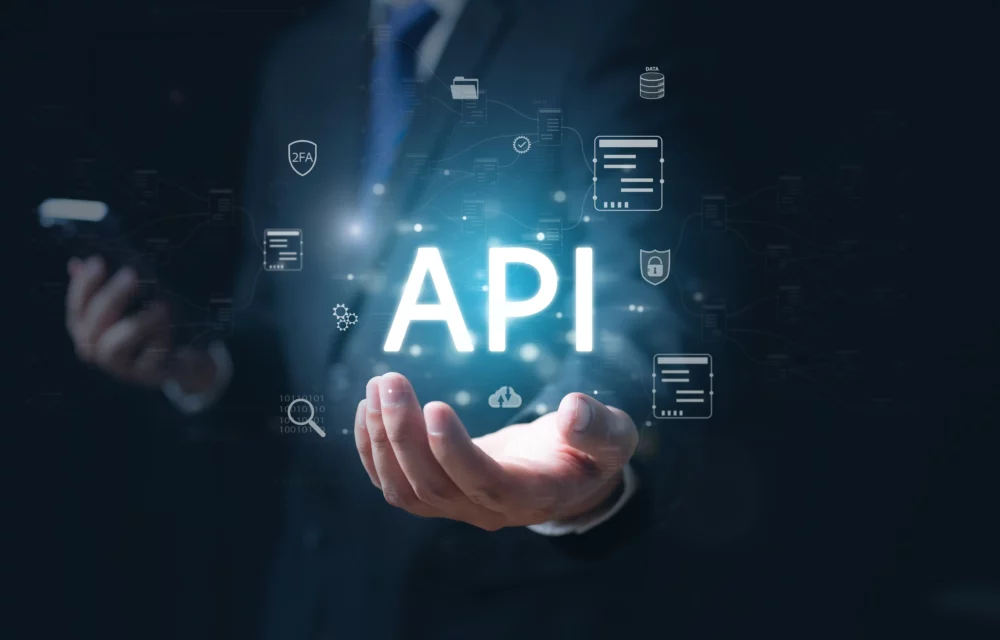API: A Cross-Platform Information

API. Three letters that can have a significantly greater impact on the quality of life of HR person than the length of this abbreviation. In fact, we can differentiate between the “pre-API” and “post-API” era when it comes to digitalization and working with data.
What is API? Why is it important?
Firstly, the introduction for all who more or less know what API is, but haven’t had the honour yet of working with it.
API (short for Application Programming Interface) is, in simple terms, the basic technical interface for applications (and in the figurative sense, also databases that applications work with). It allows applications to communicate easily and share data.
It sounds trivial and a layman would say that such a thing is common. But believe me, it’s not – in many cases, one application’s data is unavailable to another.
What does API mean in practice for HR? For instance, if you have more applications, you can connect them to each other. A specialized application on time management can provide data for a HRIS platform which can get data from your database with employee information. You don’t have to write anything or keep an eye on the data relevance. It updates itself.
API is designed in such a way that the programmer doesn’t spend too much time by “plugging it in”. So, connecting applications or their databases to each other won’t cost you a fortune. What’s more – you won’t be spending time in HR on something as unproductive as checking if there’s identical data in your application and two Excell spreadsheets.
What should be your HRIS linked with?
As mentioned above – the biggest API benefit for your business is that your data won’t be in more places and you won’t have to check it manually. We really don’t exaggerate when we say that the companies are still full of “double spreadsheets” and the need to check HR data in multiple places manually – often in places you wouldn’t expect. And it’s so painful. We’ve mentioned that several times. A professional’s time spent on this dull agenda is then logically lacking elsewhere.
The second benefit, that HR departments are only just discovering, is the use of API for both shallow and deep analysis. In fact, a HRIS with a simple API is absolutely essential for working with people analytics by the spirit of bon mot “what I don’t measure, I don’t manage”. Because the more data you can get into your HRIS, the more accurate your models will be.
And of course, vice versa – an open HRIS platform can provide data for any other company applications – performance planning, predictive models or benefit programs.
How can API help your business
1) Integration with user profiles in calendars
At first sight, it seems to be a small thing. But we’ll show you why such details matter.
Imagine that you don’t have to enter information into calendars. If you plan a feedback meeting in your HRIS platform, it’ll be automatically transferred as an event directly to a particular user. If they use a calendar that allows to share their data (most of the biggest platforms are able to do it), of course you’ll see it directly in HRIS.
People will automatically see absences, shifts, approved leave or whether the person is at work or remote. Isn’t it more comfortable than entering time disposition information in several places?
2) Connection to Slack or other platforms
“Don’t forget to fill out your leave” or “Attention! Your timesheets aren’t completed today!” – this is exactly the type of information that can be automatically sent to your colleagues to the platforms they’re used to working with. Automated messaging can be based on data of a specific user. So, it’s not necessarily spam that is sent universally to everyone.
In the same way, you can get a request for feedback, a reminder of a company-wide meeting or new legislative obligations that needs to be completed. Instead of HR person running around, information buzz around.
3) Talent acquisition
If you have a separate ATS platform in addition to a HRIS software, then connecting them via API is a must. The steps, you can automate to reduce any unnecessary mistakes, are countless – from automatically created profile of a hired candidate to sophisticated steps such as modelling potential teams and their competencies within a current candidate pool.
4) Time tracking
Time spent on performing a task. It’s the most valuable commodity for any analytics. It would be great if you could “track” time and all platforms that need the information could work with it. Thanks to API, it can really work. A HRIS platform can either send information about allocated and worked hours on individual tasks or receive them from other platforms.
If you don’t want your team to be annoyed too much with time management, this can be the way to make the situation as easy and “de-bureaucratic” as possible. It’s common for various positions to use different software with different requirements. Then, they have to double track the time tracked on them in their HRIS platform.
5) Connection to accounting systems
Do you want your CFO love you and HR department to be your greatest ally? Then show them how your HRIS platform can provide employee data into accounting software.
The payroll agenda is being digitized all over the world and it’s a perfect example of double-entry data keeping. Sooner or later, you’re going to face this issue anyway. So, let’s get ready for it in advance.
A HRIS system can supply materials for payroll accounting, information about business trips, benefits, as well as family status and applied taxes.
6) Data visualisation
We’ve already mentioned it above but let’s repeat- data is the basis for any measurement. If you want to be nice to those who work with them, then it should be generally accepted that we talk about “clearly presented data”.
Basically, there are two ways for HR departments how to project the data into understandable contexts. Either they have such a good HRIS platform that many of them take this for granted (or declare that they’ll develop in this area), or the data can be sent “out” via API; for example, to Power BI, Tableau, Looker and other platforms.
So, be careful when a data analyst, CEO or CFO ask you to provide data just for their visualisation. If they’re ok with “Excel version”, you’ll put your head in a noose. At this moment, shout out that “it’s not worth it without API”.
7) Identical safe login
Again, a minor detail. However, even such a small thing can please. Think how many logins you have to use for various applications. Wouldn’t it be more useful to join them into one? Especially for the companies that don’t use Microsoft 365 or Google, this can be a time saver. Not to mention security.
Explore your options in this area – for example, the OKTA secure login is the market standard.
8) Benefits administration
Have a clear overview of the benefit options for particular groups of employees and provide data on benefit usage into accounting platforms. Once again, integration can not only save time but also prevent mistakes.
What’s more, if you use a separate benefit platform, then connecting to HRIS via API is basically a must.
9) Whistleblowing
Whistleblowing has quickly found its way to companies where it hasn’t been a legal obligation yet. Those who do it well, can already see the first positive results – greater trust in the company or rapid removal of toxic elements.
API can help in several ways – firstly, it can match the “services” of particular people according to working hours, leaves and work with the elements of substitute. Secondly, it enables to solve one of the biggest complications. Whistleblowing channels often act spontaneously as the ways for reporting minor complaints or just for collecting suggestions, proposals and recommendations from employees. These types of suggestions are allowed to be redirected to a HRIS platform by API.
10) Smart communication
Feedbacks, issue management, important notifications. And also, mini-referendums, surveys or community activities such as arranging car pooling or company swaps. Of course, full evaluation of the impact of sent messages. Smart communication is on the rise and it’ll play an increasingly important role.
By linking platforms like Munipolis or Jobka to your HRIS platform, you build an important superstructure for the data – you connect contact databases, update socio-demographic profiles and keep a good track of your people’s activation. You’ll also find synergy in the results of feedback communication or regular feedback sessions.
The world of API is changing – suppliers can be influenced also by you
What to say at the end? Don’t underestimate the power of integration. Think about not only saved troubles, time and costs but also preventing serious problems that can happen because of common human mistake and because “someone hasn’t updated data”. Do you want the list of software, where data have to be manually compared with each other, to be a part of onboarding of a new colleague to HR department?
I’d like to give you some advice. You can influence what kind of integrations your HRIS will have. It’s the golden rule that if there’s a demand, there’s an effort to satisfy a customer. At least that’s what we do at Sloneek. So definitely don’t be afraid to let us know if you appreciate some integration.




